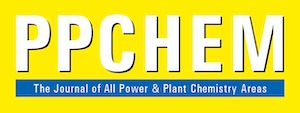
For members only
ABSTRACTS
Practical Observations and Interpretation of Oxide Growth and Exfoliation in Steam
Barry Dooley and Ian Wright
Over the last 40 years oxide growth and exfoliation (OGE) in superheater and reheater tubing have been responsible for a number of power plant problems which seriously have affected reliability. In the same time period, the authors have collected a data base of scale morphologies that has been used to describe in detail the progression of oxide scale development to the point where failure can occur. The concomitant evolution of knowledge of the factors that determine the mode of scale growth and failure in steam has provided the foundation for defining the specific stages in that progression, understanding differences among ferritic and austenitic alloys, and for categorizing the influence of plant operating characteristics. In particular, while tube/steam temperature and the maximum temperature drop at plant shutdown are major variables, the specific cycle chemistry used for the plant feedwater has very little influence. Key stages in the progression of scale growth to the point of failure are identified as OGE indices that are specific for ferritic and austenitic steels. These indices are intended to be used proactively to determine the current condition of a superheater or reheater on the path to exfoliation and possible plant damage. Also, by analyzing samples of exfoliant or oxide deposits responsible for damage, the origin of the oxide, and thus a possible superheater or reheater problem, can be identified retroactively.
PPCHEM® 2019, 21(6), 374–395
For Members only
ABHUG 2019 Highlights and Press Release
The first annual meeting of ABHUG held on the 30th October to 1st November 2019 in Brisbane, Australia was chaired by Barry Dooley of Structural Integrity Associates. This first ABHUG conference followed 11 annual meetings of AHUG (Australasian HRSG Users Group) and included conventional fossil plant technology and issues closely related to those in HRSGs. ABHUG 2019 attracted 75 participants from Australia, Japan, New Zealand, Thailand, UK, and USA. About 50% of the participants were Users, which is the highest of the other HRSG forums worldwide.
PPCHEM® 2019, 21(6), 396–397
IAPWS TGD10-19 Chemistry Management in Generator Water Cooling during Operation and Shutdown
The International Association for the Properties of Water and Steam
This Technical Guidance Document applies to all generators with water-cooled windings. From the operating side, adherence to a suitable water chemistry regimen as well as proper layup practices help to avoid or mitigate flow restrictions. Other influencing factors are design and materials. It is emphasized that this is an IAPWS Technical Guidance Document and that, depending on local requirements, the normal or target values will need to be customized for each case, depending on the actual conditions of operation and maintenance.
PPCHEM® 2019, 21(6), 400–439


